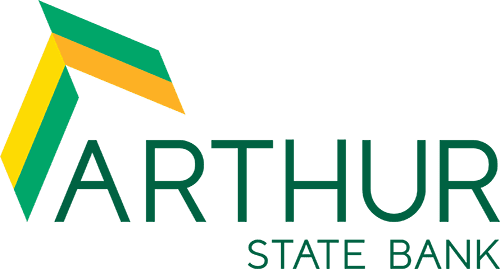Thanks to a long list of technological advances in the digital age, today’s American consumers can file their taxes, buy and sell stocks, make banking transactions, and file insurance claims more easily than ever before. In fact, in most cases, all of these things (and much more) can be accomplished with a few simple swipes of the smartphone or taps of the keyboard.
But there is a downside to having it so easy. In addition to delivering simplicity and time savings for consumers, all of these modern conveniences also present tech-savvy criminals with new opportunities to steal a person’s personal and/or financial information from nearly anywhere with a computer and an internet connection. So, to keep their money, information and even their own identity well protected, today’s consumers must remain alert, careful and vigilant.
The ID theft threat — and the warning signs
According to the most current yearly statistics available, more than 5.5 million cases of fraud and identity theft were reported to the Federal Trade Commission in 2021, with nearly 1.5 million of those being cases of consumers’ identification being stolen. Losses from ID theft cost Americans nearly $6 billion in 2021, with imposter scams accounting for nearly $3 billion of those losses, and nearly $400 million being the result of fraudulent online shopping. In addition, overall cases of fraud reported in 2021 rose a whopping 70% from the numbers reported in 2020.
Some of the red flags consumers might see indicating that their identity has been compromised include:
- Being billed for items they don’t recall ever purchasing
- Seeing unrecognized charges on their bank, credit card or other financial statements
- No longer receiving certain household bills in the mail, which could indicate that a criminal has changed the billing address
- Being denied access to credit — or being given credit with higher-than-expected interest rates — even when they thought they had a high credit score
- Receiving notice that a tax return has been rejected
8 ways to protect yourself
Fortunately, by following a handful of tried-and-true methods, consumers can greatly reduce the chances that a cybercriminal will successfully steal their identity, funds, sensitive information or assets. To step up your security, consider taking these eight steps to better protect yourself:
- Employ safe online habits — By vigilantly maintaining a handful of cybersecurity-focused habits and always being mindful of the fact that cybercriminals could be lurking online, consumers can go a long way toward keeping their personal and financial information safe.
While a much more in-depth explanation of some of the leading ways consumers can boost their cybersecurity can be found in this Arthur State Bank blog article, a quick rundown includes:
– Keeping devices and software up to date
– Using strong passwords
– Being wary of phishing attempts
– Limiting the public sharing of personal information online
– Securing internet connections
– Confirming site security when shopping online
– Protecting debit and credit card numbers
– Enabling multi-factor authentication when available
– Setting up alerts for financial accounts
- Check your credit report regularly — Credit reports offer consumers a chance to review the loan and payment history on any financial accounts in their name — and present a great opportunity to keep an eye out for any unrecognized accounts and activities.
Further, each of the United States’ three major credit-reporting agencies — Equifax, Experian and TransUnion — are required by law to provide consumers with a free copy of their credit report annually. To get a copy, consumers can visit com and fill out an online request form.
- Keep a close eye on your financial accounts — Especially with quick access to most financial accounts available via the internet, it has never been easier for consumers to monitor the activities on their accounts — and to flag/dispute any that they may not recognize. Otherwise, consumers can stay on the lookout for fraudulent charges and other suspicious activities on their accounts by carefully reviewing their financial statements (paper or digital) when they arrive.
- Leverage a credit or identity monitoring service — A number of financial organizations and companies offer free credit monitoring for consumers who choose to sign up for the service, while others provide identity monitoring at a low cost — and choosing either is another great way to keep an eye out for fraud attempts. Two of the leading free options here are Experian and Capital One’s CreditWise, while top paid services include IdentityForce, Identity Guard and PrivacyGuard.
- Use a password manager — Of course, passwords that are harder for users to remember are also harder for cybercriminals to hack. And when consumers use unique passwords for each of their online accounts, this practice can help prevent additional accounts from being compromised when one account’s password is hacked or leaked.
A password manager can deliver big help in both of these areas. It does so by enabling consumers to use long and complicated passwords that are harder for fraudsters to crack, as well as by making it easier for users to employ a different password for each of their accounts. And it accomplishes each while eliminating the need for the consumer to remember all of the strong passwords.
- Don’t give out personal information over the phone (or via email or text) — Legitimate financial organizations never call, email or text consumers directly requesting personal information such as their passwords, PINs or Social Security numbers. So consumers should be very skeptical if they ever receive such a request, and they should always refrain from providing such details in response to a call, email or text.
If a phone call does seem to be legitimate, consumers can request the caller’s credentials, end the conversation, and contact the organization directly using an official phone number found on the organization’s website or billing statements. For emails and texts that seem legitimate, consumers should skip the reply and reach out to the organization directly using verified contact information.
- Safeguard personal documents, and shred old ones — Any documentation containing a consumer’s personal information — and especially information about financial accounts and/or containing personal details such as a Social Security number — can prove extremely useful to identity thieves. To keep such documents from falling into the wrong hands, consumers can place a hold on their mail delivery when away from home for extended periods of time, or have a trusted neighbor collect mail from their mailbox while away. And old financial statements, credit cards, etc. should be shredded or otherwise rendered unreadable before being discarded.
- Consider a security freeze — Especially for consumers who discover that their ID has already been compromised, this step may be worth considering. By placing a security freeze on their credit reports, consumers can prevent their credit report from being viewed — effectively making it impossible for any new credit accounts to be opened in their name. And when a freeze that’s in place needs to be lifted to open a legitimate credit account, consumers can do this by contacting the credit bureaus and providing a password or PIN that was given when the initial freeze was placed.
Proudly serving South Carolina since 1933, Arthur State Bank offers accounts and services to meet a variety of financial needs. To help you achieve all your financial goals, the bank offers in-person service as well as a range of convenient digital solutions. To learn how Arthur State Bank can help you with banking needs ranging from checking and savings to retirement accounts, mortgages, other personal loans and more, visit arthurstatebank.com.






















